Saying Farewell to the Gods (and Devils and Caravaneers) of the Caravan Road: K.V. Johansen
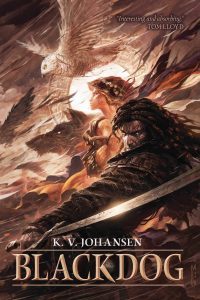 The Last Road, the final novel of Gods of the Caravan Road, comes out in October, finishing a journey that began roughly fifteen years ago. The first book, Blackdog, was published in 2011; I had written it around 2005, I think … it’s all a bit hazy now, the past. But that’s a long time to spend with a gang of people in your head. Some characters come into being due to the needs of the story; they play their part, and come or go as I want them to, and I don’t wonder what they might do in other situations — if I began to write them a new scene, I’d know, but they don’t generate stories not connected to the main plot in my head. Others, though, the ones who have been around longest or who have had much more life put into them because they are much more central to the story and have been through so many alternate drafts, feel as though they have an independent life. They’re the ones who seem like old friends who should always be there when I reach for them. Moth and Mikki, Yeh-Lin, Holla-Sayan, Ahjvar and Ghu . . . it is very strange to find myself here, realizing that it’s over. But in a way, it’s a bit of a relief, too, artistically speaking. Their stories have taken them to where they had to be. There’s a great satisfaction in the right ending.
The Last Road, the final novel of Gods of the Caravan Road, comes out in October, finishing a journey that began roughly fifteen years ago. The first book, Blackdog, was published in 2011; I had written it around 2005, I think … it’s all a bit hazy now, the past. But that’s a long time to spend with a gang of people in your head. Some characters come into being due to the needs of the story; they play their part, and come or go as I want them to, and I don’t wonder what they might do in other situations — if I began to write them a new scene, I’d know, but they don’t generate stories not connected to the main plot in my head. Others, though, the ones who have been around longest or who have had much more life put into them because they are much more central to the story and have been through so many alternate drafts, feel as though they have an independent life. They’re the ones who seem like old friends who should always be there when I reach for them. Moth and Mikki, Yeh-Lin, Holla-Sayan, Ahjvar and Ghu . . . it is very strange to find myself here, realizing that it’s over. But in a way, it’s a bit of a relief, too, artistically speaking. Their stories have taken them to where they had to be. There’s a great satisfaction in the right ending.
A story has a natural rhythm, like the turning of the year.
It turns out to be very difficult to write much about these favourite and most essential of my characters here, because … things happen, and you don’t want to know what happens until you actually read the book. I can’t talk about why I did something, without saying what I did. Their journeys through this story are not necessarily easy ones, and they don’t — can’t — come through unscathed and unchanged.
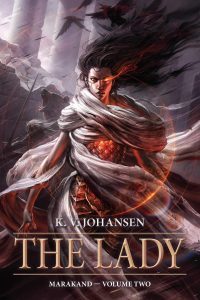
However, The Last Road isn’t only about the characters who’ve been on the journey since the beginning. New people are caught up into it, their stories only beginning. There’s a Westgrasslander woman, Jolanan, whose life becomes entangled with Holla-Sayan’s for a time. Her journey takes her into the mountains, far from the plains of her homeland and the long retreat her people are fighting there against an invader out of the west. Jolanan’s sense of self has been shaken by things that have happened to her; she’s become a person she could not have imagined only a few years before, like someone out of a winter’s tale, scarred and afraid and defeated, sometimes feeling like a deserter from the fight she thought she had chosen, even though she has never left the battle, only moved to another front. She’s in danger of falling into that bitterness that rejects or even fails to recognize the good that comes one’s way. Then there is Nikeh, an orphaned child adopted by Yeh-Lin on her travels on the western coast of the continent and raised by her to be a scholar, though one with the skillset of the Wind in the Reeds, the Nabbani empress’s spies. Nikeh, the book suggests by the inclusion of some chronicle extracts, becomes an historian, but how she gets there from the girl who once prowled the streets of Marakand fantasizing about murdering priests is a story of which we only see the start, the rest still untold. And there’s Ailan, my favourite of the three new point of view characters. He’s a young man who ends up travelling with Ahjvar, developing a serious case of hero-worship. In the end … well, in the end, Ailan is really only just at the beginning, and he’s the one new character I most regret leaving behind, because he has the potential to be so much fun.
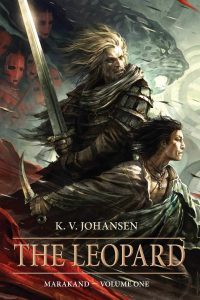
The thing about a book, though, is that when it’s over, it’s still there. It’s not like Moth and Holla-Sayan and Ghu and the rest of the gang have vanished from the world because book five has ended. They’re still there (and writing this has given me a strong wish to read The Leopard again, to watch how Ahjvar becomes the man who could take Ailan under his wing).
It’s time to move on. There are new worlds to explore, new characters to discover. And anyway, who knows? I may turn out a few of the Ahj and Ghu short stories that are still drifting around in the back of my mind. Maybe even a little “What Ahjvar and Ghu did next …” Or the one about Mikki and the young Baisirbska shaman who came to him looking for courtship advice (a scrapped tangent from Gods of Nabban). Or that disastrous encounter between Moth and Mikki and a wild god of the Salt Desert, when they were travelling to Marakand (a scrapped chapter of The Leopard). And what kind of trouble did Mikki and Holla get into on their various travels, together and solitary, between Gods of Nabban and The Last Road?
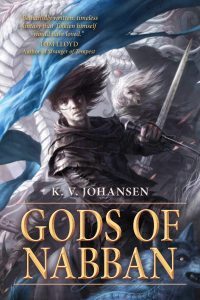
I’ve got other stories to write, other worlds and people to bring to life, but I’m pretty sure that someday, even if just for a few thousand words, I’ll find myself back on the caravan road.
Cover art for Books 1-4 is by Raymond Swanland and Book 5 The Last Road is by Jennifer Do.
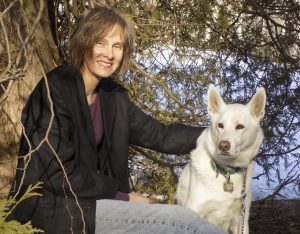
Originally from Kingston, Ontario, K.V. Johansen has an M.A. in Medieval Studies from the Centre for Medieval Studies at the University of Toronto and another, in English Literature, from McMaster, where she wrote her thesis on Layamon’s Brut, an Early Middle English epic poem. She’s been writing fantasy since childhood and has a lifelong fascination with history, archaeology, trees, and language. She also plays guitar with great determination and dedication, moderate technical skill, and to her enduring regret, an utter lack of musical talent. In addition to her secondary world fantasy for adults, she is the author of two works on the history of children’s fantasy literature, two short story collections, and a number of books for children and teens, some of which have won awards and various of which have been translated into French, Macedonian, and Danish. She lives in New Brunswick on the Bay of Fundy and spends too much time on Twitter, @kvjohansen. Her website is at www.kvj.ca.
Please Feel Free to Share:









